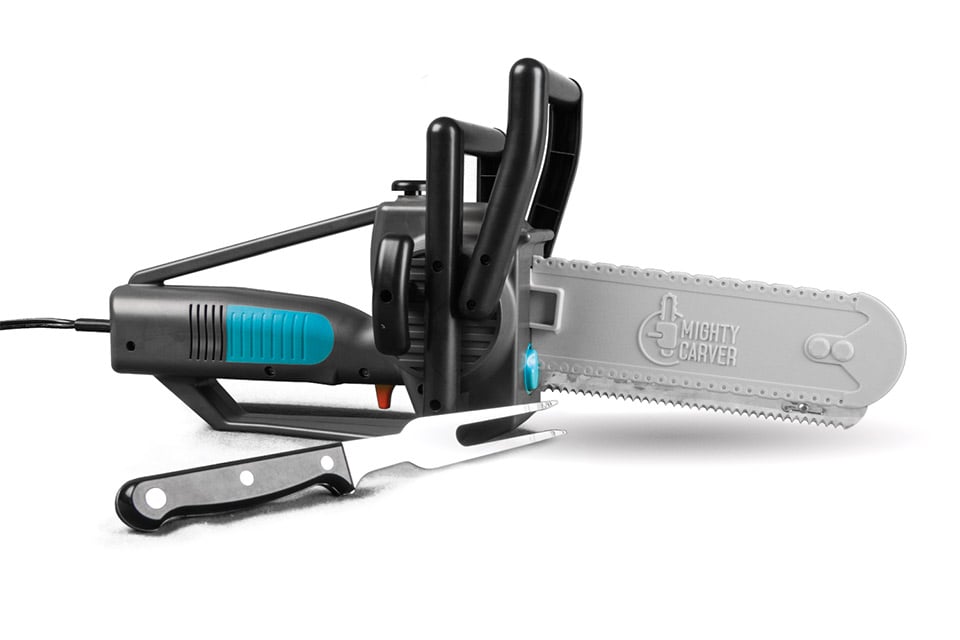LaravelShoppingcart







This is a fork of Crisane’s LaravelShoppingcart extended with minor features compatible with Laravel 6.
Installation
Install the package through Composer.
Run the Composer require command from the Terminal:
composer require bumbummen99/shoppingcart
Now you’re ready to start using the shoppingcart in your application.
As of version 2 of this package it’s possibly to use dependency injection to inject an instance of the Cart class into your controller or other class
Overview
Look at one of the following topics to learn more about LaravelShoppingcart
Usage
The shoppingcart gives you the following methods to use:
Cart::add()
Adding an item to the cart is really simple, you just use the add() method, which accepts a variety of parameters.
In its most basic form you can specify the id, name, quantity, price and weight of the product you’d like to add to the cart.
Cart::add('293ad', 'Product 1', 1, 9.99, 550);
As an optional fifth parameter you can pass it options, so you can add multiple items with the same id, but with (for instance) a different size.
Cart::add('293ad', 'Product 1', 1, 9.99, 550, ['size' => 'large']);
The add() method will return an CartItem instance of the item you just added to the cart.
Maybe you prefer to add the item using an array? As long as the array contains the required keys, you can pass it to the method. The options key is optional.
Cart::add(['id' => '293ad', 'name' => 'Product 1', 'qty' => 1, 'price' => 9.99, 'weight' => 550, 'options' => ['size' => 'large']]);
New in version 2 of the package is the possibility to work with the Buyable interface. The way this works is that you have a model implement the Buyable interface, which will make you implement a few methods so the package knows how to get the id, name and price from your model. This way you can just pass the add() method a model and the quantity and it will automatically add it to the cart.
As an added bonus it will automatically associate the model with the CartItem
Cart::add($product, 1, ['size' => 'large']);
As an optional third parameter you can add options.
Cart::add($product, 1, ['size' => 'large']);
Finally, you can also add multipe items to the cart at once. You can just pass the add() method an array of arrays, or an array of Buyables and they will be added to the cart.
When adding multiple items to the cart, the add() method will return an array of CartItems.
Cart::add([ ['id' => '293ad', 'name' => 'Product 1', 'qty' => 1, 'price' => 10.00, 'weight' => 550], ['id' => '4832k', 'name' => 'Product 2', 'qty' => 1, 'price' => 10.00, 'weight' => 550, 'options' => ['size' => 'large']] ]); Cart::add([$product1, $product2]);
Cart::update()
To update an item in the cart, you’ll first need the rowId of the item. Next you can use the update() method to update it.
If you simply want to update the quantity, you’ll pass the update method the rowId and the new quantity:
$rowId = 'da39a3ee5e6b4b0d3255bfef95601890afd80709'; Cart::update($rowId, 2); // Will update the quantity
If you want to update more attributes of the item, you can either pass the update method an array or a Buyable as the second parameter. This way you can update all information of the item with the given rowId.
Cart::update($rowId, ['name' => 'Product 1']); // Will update the name Cart::update($rowId, $product); // Will update the id, name and price
Cart::remove()
To remove an item for the cart, you’ll again need the rowId. This rowId you simply pass to the remove() method and it will remove the item from the cart.
$rowId = 'da39a3ee5e6b4b0d3255bfef95601890afd80709'; Cart::remove($rowId);
Cart::get()
If you want to get an item from the cart using its rowId, you can simply call the get() method on the cart and pass it the rowId.
$rowId = 'da39a3ee5e6b4b0d3255bfef95601890afd80709'; Cart::get($rowId);
Cart::content()
Of course you also want to get the carts content. This is where you’ll use the content method. This method will return a Collection of CartItems which you can iterate over and show the content to your customers.
This method will return the content of the current cart instance, if you want the content of another instance, simply chain the calls.
Cart::instance('wishlist')->content();
Cart::destroy()
If you want to completely remove the content of a cart, you can call the destroy method on the cart. This will remove all CartItems from the cart for the current cart instance.
Cart::weight()
The weight() method can be used to get the weight total of all items in the cart, given there weight and quantity.
The method will automatically format the result, which you can tweak using the three optional parameters
Cart::weight($decimals, $decimalSeperator, $thousandSeperator);
You can set the default number format in the config file.
If you’re not using the Facade, but use dependency injection in your (for instance) Controller, you can also simply get the total property $cart->weight
Cart::total()
The total() method can be used to get the calculated total of all items in the cart, given there price and quantity.
The method will automatically format the result, which you can tweak using the three optional parameters
Cart::total($decimals, $decimalSeparator, $thousandSeparator);
You can set the default number format in the config file.
If you’re not using the Facade, but use dependency injection in your (for instance) Controller, you can also simply get the total property $cart->total
Cart::tax()
The tax() method can be used to get the calculated amount of tax for all items in the cart, given there price and quantity.
The method will automatically format the result, which you can tweak using the three optional parameters
Cart::tax($decimals, $decimalSeparator, $thousandSeparator);
You can set the default number format in the config file.
If you’re not using the Facade, but use dependency injection in your (for instance) Controller, you can also simply get the tax property $cart->tax
Cart::subtotal()
The subtotal() method can be used to get the total of all items in the cart, minus the total amount of tax.
The method will automatically format the result, which you can tweak using the three optional parameters
Cart::subtotal($decimals, $decimalSeparator, $thousandSeparator);
You can set the default number format in the config file.
If you’re not using the Facade, but use dependency injection in your (for instance) Controller, you can also simply get the subtotal property $cart->subtotal
Cart::discount()
The discount() method can be used to get the total discount of all items in the cart.
The method will automatically format the result, which you can tweak using the three optional parameters
Cart::discount($decimals, $decimalSeparator, $thousandSeparator);
You can set the default number format in the config file.
If you’re not using the Facade, but use dependency injection in your (for instance) Controller, you can also simply get the subtotal property $cart->discount
Cart::initial()
The initial() method can be used to get the total price of all items in the cart before discount.
The method will automatically format the result, which you can tweak using the three optional parameters
Cart::initial($decimals, $decimalSeparator, $thousandSeparator);
You can set the default number format in the config file.
If you’re not using the Facade, but use dependency injection in your (for instance) Controller, you can also simply get the subtotal property $cart->initial
Cart::count()
If you want to know how many items there are in your cart, you can use the count() method. This method will return the total number of items in the cart. So if you’ve added 2 books and 1 shirt, it will return 3 items.
Cart::count(); $cart->count();
Cart::search()
To find an item in the cart, you can use the search() method.
This method was changed on version 2
Behind the scenes, the method simply uses the filter method of the Laravel Collection class. This means you must pass it a Closure in which you’ll specify you search terms.
If you for instance want to find all items with an id of 1:
$cart->search(function ($cartItem, $rowId) { return $cartItem->id === 1; });
As you can see the Closure will receive two parameters. The first is the CartItem to perform the check against. The second parameter is the rowId of this CartItem.
The method will return a Collection containing all CartItems that where found
This way of searching gives you total control over the search process and gives you the ability to create very precise and specific searches.
Cart::setTax($rowId, $taxRate)
You can use the setTax() method to change the tax rate that applies to the CartItem. This will overwrite the value set in the config file.
Cart::setTax($rowId, 21); $cart->setTax($rowId, 21);
Cart::setGlobalTax($taxRate)
You can use the setGlobalTax() method to change the tax rate for all items in the cart. New items will receive the setGlobalTax as well.
Cart::setGlobalTax(21); $cart->setGlobalTax(21);
Cart::setGlobalDiscount($discountRate)
You can use the setGlobalDiscount() method to change the discount rate for all items in the cart. New items will receive the discount as well.
Cart::setGlobalDiscount(50); $cart->setGlobalDiscount(50);
Cart::setDiscount($rowId, $taxRate)
You can use the setDiscount() method to change the discount rate that applies a CartItem. Keep in mind that this value will be changed if you set the global discount for the Cart afterwards.
Cart::setDiscount($rowId, 21); $cart->setDiscount($rowId, 21);
Buyable
For the convenience of faster adding items to cart and their automatic association, your model has to implement the Buyable interface. You can use the CanBeBought trait to implement the required methods but keep in mind that these will use predefined fields on your model for the required values.
<?php namespace App\Models; use Gloudemans\Shoppingcart\Contracts\Buyable; use Illuminate\Database\Eloquent\Model; class Product extends Model implements Buyable { use Gloudemans\Shoppingcart\CanBeBought; }
If the trait does not work for on the model or you wan’t to map the fields manually the model has to implement the Buyable interface methods. To do so, it must implement such functions:
public function getBuyableIdentifier(){ return $this->id; } public function getBuyableDescription(){ return $this->name; } public function getBuyablePrice(){ return $this->price; } public function getBuyableWeight(){ return $this->weight; }
Example:
<?php namespace App\Models; use Gloudemans\Shoppingcart\Contracts\Buyable; use Illuminate\Database\Eloquent\Model; class Product extends Model implements Buyable { public function getBuyableIdentifier($options = null) { return $this->id; } public function getBuyableDescription($options = null) { return $this->name; } public function getBuyablePrice($options = null) { return $this->price; } }
Collections
On multiple instances the Cart will return to you a Collection. This is just a simple Laravel Collection, so all methods you can call on a Laravel Collection are also available on the result.
As an example, you can quicky get the number of unique products in a cart:
Cart::content()->count();
Or you can group the content by the id of the products:
Cart::content()->groupBy('id');
Instances
The packages supports multiple instances of the cart. The way this works is like this:
You can set the current instance of the cart by calling Cart::instance('newInstance'). From this moment, the active instance of the cart will be newInstance, so when you add, remove or get the content of the cart, you’re work with the newInstance instance of the cart. If you want to switch instances, you just call Cart::instance('otherInstance') again, and you’re working with the otherInstance again.
So a little example:
Cart::instance('shopping')->add('192ao12', 'Product 1', 1, 9.99, 550); // Get the content of the 'shopping' cart Cart::content(); Cart::instance('wishlist')->add('sdjk922', 'Product 2', 1, 19.95, 550, ['size' => 'medium']); // Get the content of the 'wishlist' cart Cart::content(); // If you want to get the content of the 'shopping' cart again Cart::instance('shopping')->content(); // And the count of the 'wishlist' cart again Cart::instance('wishlist')->count();
You can also use the InstanceIdentifier Contract to extend a desired Model to assign / create a Cart instance for it. This also allows to directly set the global discount.
<?php namespace App; ... use Illuminate\Foundation\Auth\User as Authenticatable; use Gloudemans\Shoppingcart\Contracts\InstanceIdentifier; class User extends Authenticatable implements InstanceIdentifier { ... /** * Get the unique identifier to load the Cart from * * @return int|string */ public function getInstanceIdentifier($options = null) { return $this->email; } /** * Get the unique identifier to load the Cart from * * @return int|string */ public function getInstanceGlobalDiscount($options = null) { return $this->discountRate ?: 0; } } // Inside Controller $user = \Auth::user(); $cart = Cart::instance($user);
N.B. Keep in mind that the cart stays in the last set instance for as long as you don’t set a different one during script execution.
N.B.2 The default cart instance is called default, so when you’re not using instances,Cart::content(); is the same as Cart::instance('default')->content().
Models
Because it can be very convenient to be able to directly access a model from a CartItem is it possible to associate a model with the items in the cart. Let’s say you have a Product model in your application. With the associate() method, you can tell the cart that an item in the cart, is associated to the Product model.
That way you can access your model right from the CartItem!
The model can be accessed via the model property on the CartItem.
If your model implements the Buyable interface and you used your model to add the item to the cart, it will associate automatically.
Here is an example:
// First we'll add the item to the cart. $cartItem = Cart::add('293ad', 'Product 1', 1, 9.99, 550, ['size' => 'large']); // Next we associate a model with the item. Cart::associate($cartItem->rowId, 'Product'); // Or even easier, call the associate method on the CartItem! $cartItem->associate('Product'); // You can even make it a one-liner Cart::add('293ad', 'Product 1', 1, 9.99, 550, ['size' => 'large'])->associate('Product'); // Now, when iterating over the content of the cart, you can access the model. foreach(Cart::content() as $row) { echo 'You have ' . $row->qty . ' items of ' . $row->model->name . ' with description: "' . $row->model->description . '" in your cart.'; }
Database
Configuration
To save cart into the database so you can retrieve it later, the package needs to know which database connection to use and what the name of the table is. By default the package will use the default database connection and use a table named shoppingcart. If you want to change these options, you’ll have to publish the config file.
php artisan vendor:publish --provider="Gloudemans\Shoppingcart\ShoppingcartServiceProvider" --tag="config"
This will give you a cart.php config file in which you can make the changes.
To make your life easy, the package also includes a ready to use migration which you can publish by running:
php artisan vendor:publish --provider="Gloudemans\Shoppingcart\ShoppingcartServiceProvider" --tag="migrations"
This will place a shoppingcart table’s migration file into database/migrations directory. Now all you have to do is run php artisan migrate to migrate your database.
Storing the cart
To store your cart instance into the database, you have to call the store($identifier) method. Where $identifier is a random key, for instance the id or username of the user.
Cart::store('username'); // To store a cart instance named 'wishlist' Cart::instance('wishlist')->store('username');
Restoring the cart
If you want to retrieve the cart from the database and restore it, all you have to do is call the restore($identifier) where $identifier is the key you specified for the store method.
Cart::restore('username'); // To restore a cart instance named 'wishlist' Cart::instance('wishlist')->restore('username');
Merge the cart
If you want to merge the cart with another one from the database, all you have to do is call the merge($identifier) where $identifier is the key you specified for the store method. You can also define if you want to keep the discount and tax rates of the items.
// Merge the contents of 'savedcart' into 'username'. Cart::instance('username')->merge('savedcart', $keepDiscount, $keepTaxrate);
Exceptions
The Cart package will throw exceptions if something goes wrong. This way it’s easier to debug your code using the Cart package or to handle the error based on the type of exceptions. The Cart packages can throw the following exceptions:
| Exception |
Reason |
| CartAlreadyStoredException |
When trying to store a cart that was already stored using the specified identifier |
| InvalidRowIDException |
When the rowId that got passed doesn’t exists in the current cart instance |
| UnknownModelException |
When you try to associate an none existing model to a CartItem. |
Events
The cart also has events build in. There are five events available for you to listen for.
| Event |
Fired |
Parameter |
| cart.added |
When an item was added to the cart. |
The CartItem that was added. |
| cart.updated |
When an item in the cart was updated. |
The CartItem that was updated. |
| cart.removed |
When an item is removed from the cart. |
The CartItem that was removed. |
| cart.stored |
When the content of a cart was stored. |
– |
| cart.restored |
When the content of a cart was restored. |
– |
Example
Below is a little example of how to list the cart content in a table:
// Add some items in your Controller. Cart::add('192ao12', 'Product 1', 1, 9.99); Cart::add('1239ad0', 'Product 2', 2, 5.95, ['size' => 'large']); // Display the content in a View. <table> <thead> <tr> <th>Product</th> <th>Qty</th> <th>Price</th> <th>Subtotal</th> </tr> </thead> <tbody> <?php foreach(Cart::content() as $row) :?> <tr> <td> <p><strong><?php echo $row->name; ?></strong></p> <p><?php echo ($row->options->has('size') ? $row->options->size : ''); ?></p> </td> <td><input type="text" value="<?php echo $row->qty; ?>"></td> <td>$<?php echo $row->price; ?></td> <td>$<?php echo $row->total; ?></td> </tr> <?php endforeach;?> </tbody> <tfoot> <tr> <td colspan="2"> </td> <td>Subtotal</td> <td><?php echo Cart::subtotal(); ?></td> </tr> <tr> <td colspan="2"> </td> <td>Tax</td> <td><?php echo Cart::tax(); ?></td> </tr> <tr> <td colspan="2"> </td> <td>Total</td> <td><?php echo Cart::total(); ?></td> </tr> </tfoot> </table>







